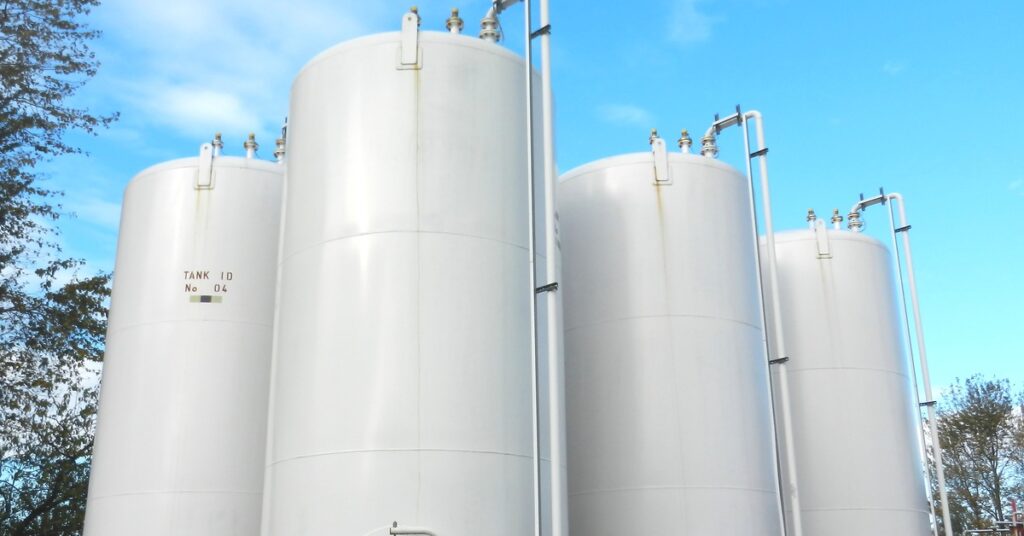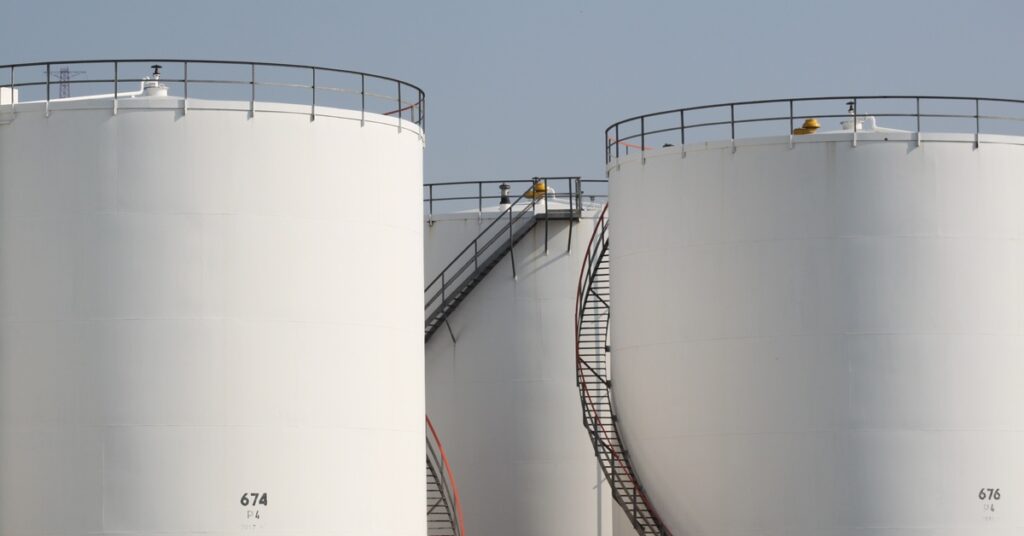
When it comes to protecting storage tanks, you need a solution that safeguards your investments and ensures long-term performance. The two primary options available are tank liners and tank coatings. Both options serve the purpose of protecting tanks from wear, corrosion, and leaks, but how do you know which is best between tank liners and tank coatings? When you compare the two, you can see their different applications, advantages, and limitations, and then you can make the choice that’s right for you and your needs.
Installation Process
Tank liners are typically pre-manufactured and installed as a physical barrier inside the tank. They are custom-fitted to the tank's interior, covering every surface with a durable material to create a thick, protective layer. This process often involves securing the liner with specialized fasteners or adhesives, ensuring a snug fit even in complex tank geometries.
On the other hand, tank coatings involve applying a liquid coating directly to the tank's surface, which cures to form a protective shield. Coatings may require multiple layers to achieve the desired level of protection. The choice between liners and coatings often depends on factors such as the size of the tank, the nature of the contents, the time available for installation, and the operational downtime required.
Durability
Tank liners use robust materials such as reinforced polymers, PVC, or rubber, which provide exceptional strength and resistance to wear and tear. These materials can withstand heavy-duty use and are less likely to degrade under harsh conditions. Coatings, while durable, can sometimes be prone to cracking, peeling, or blistering over time from extreme operating conditions, temperature fluctuations, or poor application techniques.
Proper surface preparation and maintenance are critical in ensuring the longevity of coatings, but liners generally offer greater durability over the long term.
Maintenance
Liners generally require less frequent maintenance due to their robust and durable construction. Once installed, they provide long-term protection with minimal upkeep, making them a practical, low-maintenance solution for tank protection.
Coatings, however, may need regular inspections to identify areas of wear, cracking, or peeling. Reapplication is often necessary in areas where degradation occurs, which can increase maintenance costs and downtime. Over time, the maintenance demands of coatings can add up, whereas liners tend to remain effective with fewer interventions.

Resistance to Corrosion and Chemicals
Both liners and coatings resist corrosion and chemical damage, but liners offer a distinct advantage in highly aggressive environments. Liners act as a physical barrier, completely separating the tank’s contents from its structure, providing superior resistance against corrosive substances such as acids, alkalis, and solvents.
Coatings, while effective, rely on their bonding strength to protect the surface, which can worsen if you don’t apply the coating properly or if it’s damaged. For tanks used in industrial environments with harsh chemical exposure, liners are often the preferred choice.
Adaptability To Tank Conditions
A significant advantage of tank liners is their ability to adapt to tank surfaces with pre-existing imperfections. Liners can easily cover cracks, rough patches, or uneven surfaces, ensuring comprehensive protection without the need for extensive surface preparation.
Coatings, on the other hand, require meticulous surface preparation before application. Issues such as rust, cracks, or unevenness can significantly compromise the coating’s effectiveness, making pre-treatment an essential but time-consuming process.
Repairability
Tank liners are relatively easy to repair in isolated sections, reducing downtime and costs. If a liner is damaged, you can patch or replace the affected area without needing to remove the entire liner. This quick and localized repair process ensures minimal disruption to operations.
Coatings, however, may require a full reapplication if the integrity of the protective layer is failing, especially if the damage is widespread. Repairing coatings can be more labor-intensive and costly compared to the straightforward repair process for liners.
Longevity
Liners typically have a much longer lifespan than coatings, especially under harsh working conditions. Their durability is because of the high-quality materials used in their construction and their ability to act as a physical barrier to protect the tank’s structure. Liners are less susceptible to the environmental factors that can degrade coatings, such as:
- UV exposure
- Chemical changes
- Temperature fluctuations
Coatings can still provide effective protection, but their longevity often depends on proper application, maintenance, and the specific working conditions of the tank.
Thickness and Protection
Tank liners provide a thick, reinforced layer that physically separates the tank’s contents from its structure. This added thickness enhances their protective capabilities, making them highly effective in preventing leaks and damage.
Coatings, by contrast, are generally thinner and rely on their bonding strength to provide protection. While coatings can still be effective, their thinner application means they may not offer the same level of mechanical protection as liners, especially in high-impact or abrasive environments.
Versatility in Applications
Tank liners are highly versatile and are used in a wide range of applications, including wastewater treatment, fuel storage, chemical containment, and even food-grade storage solutions. Their ability to handle aggressive chemicals and varying conditions makes them suitable for demanding industrial environments. Coatings, while versatile, are generally better suited for tanks used to store less aggressive materials under controlled conditions.

Temperature Resistance
For tanks that operate under extreme temperatures, liners offer superior thermal resistance. Their materials can withstand both high and low temperatures without losing flexibility or integrity. This resistance makes them ideal for applications involving temperature fluctuations or exposure to heat. Some coatings can also withstand high temperatures, but extreme fluctuations may limit their performance, leading to cracking or peeling.
Time for Production Resumption
The time required for installing a tank liner can vary depending on the tank’s size and complexity. While the installation process may take longer than applying a coating, liners typically involve fewer interruptions for repairs or maintenance once in place. Coatings, while quicker to apply initially, may require more frequent halts in operation for inspections or reapplications.
Industry Standards and Compliance
Tank liners are often manufactured to meet strict industry safety standards and certifications, ensuring reliable and consistent performance. They comply with regulations for specific applications, such as chemical storage or food-grade use.
Coatings also meet industry compliance requirements, but their reliability heavily depends on proper application techniques and environmental controls during the curing process. Choosing a solution that adheres to the necessary standards is essential for ensuring safety and regulatory compliance.
Choosing between tank liners and tank coatings depends on your specific case and operational requirements. If you prioritize durability, long-term cost savings, and enhanced protection for harsh environments, tank liners may be a better choice. However, if you need a quicker and more budget-friendly solution for moderate conditions, tank coatings could meet your needs.
Regardless of your choice, weighing the pros and cons of each option is important, and if you think you need a tank liner, let Royal Liner help. With our help, you can easily maximize the lifespan and reliability of your tanks.
